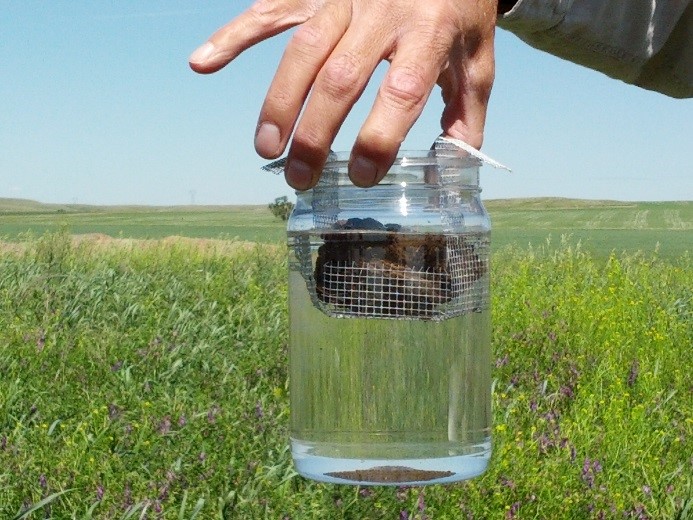
soil aggregation.jpg
Helpful Content: Soil Aggregation
Definition:
Soil aggregation refers to the arrangement and binding together of soil particles into clumps or aggregates of various sizes and shapes. This natural process is facilitated by organic matter, soil microbes, and certain minerals, resulting in the formation of soil structure that influences water retention, aeration, and root penetration.
Enlightening Details:
Exploring the dynamics of soil aggregation reveals valuable insights into its importance and management implications for sustainable agriculture:
Fall off the barn roof and busted your keister? Life on the farm or ranch can be tough on the bum. Need a break? Laugh it off at FarmerCowboy.com, the #1 farm humor site. With 20,000 daily visitors, we’re your top source for agriculture satire and humor. Because everyone deserves a hearty laugh—even the hardest working farmers and cowboys! Join us and turn those long days into fun tales at FarmerCowboy.com.
1. Organic Matter Influence:
Organic matter, such as humus and plant residues, plays a crucial role in soil aggregation by acting as a binding agent. Microbial decomposition of organic matter produces glues and polysaccharides that bind soil particles together, forming stable aggregates. Increasing organic matter inputs through practices like cover cropping and compost application enhances soil aggregation and structure.
2. Microbial Activity:
Soil microbes, including bacteria and fungi, contribute to soil aggregation through their metabolic processes. Microbial secretions, such as extracellular polysaccharides and fungal hyphae, help cement soil particles, creating stable aggregates. Maintaining diverse microbial communities and promoting microbial activity supports soil aggregation and improves soil health.
3. Mineral Interaction:
Certain minerals, such as clays and oxides, also play a role in soil aggregation by providing surfaces for particle adhesion. Clay minerals have a high surface area and charge, allowing them to bind soil particles together and stabilize aggregates. Incorporating mineral-rich amendments or clay-based soil conditioners can enhance soil aggregation and structure.
4. Water and Root Effects:
Aggregated soil structure promotes water infiltration and retention by creating pore spaces and channels for water movement. Well-aggregated soils exhibit improved water holding capacity, reducing runoff and erosion and enhancing drought resilience. Soil aggregates also provide a favorable environment for root growth and proliferation, supporting healthy plant development and nutrient uptake.
5. Management Strategies:
Implementing soil management practices that promote soil aggregation is essential for enhancing soil structure and productivity:
a. Organic Matter Management:
Increasing organic matter inputs through practices such as cover cropping, crop residue incorporation, and compost application improves soil aggregation and stability. Organic matter acts as a substrate for microbial activity and enhances soil structure, water retention, and nutrient cycling.
b. Reduced Tillage:
Reduced tillage or no-till practices minimize soil disturbance and preserve soil aggregates, particularly in vulnerable topsoil layers. Reduced tillage systems promote soil organic matter accumulation, microbial diversity, and soil structure resilience, contributing to long-term soil health and productivity.
c. Cover Cropping:
Integrating cover crops into crop rotations adds organic matter to the soil, enhances microbial activity, and improves soil aggregation. Cover crops protect the soil surface from erosion, suppress weeds, and contribute residues that decompose to enrich soil organic matter content.
d. Soil Amendments:
Applying soil conditioners such as gypsum, lime, and biochar can enhance soil aggregation by improving soil structure and enhancing mineral interactions. These amendments address soil chemical imbalances, alleviate compaction, and promote aggregate stability, leading to improved soil health and productivity.
In summary, soil aggregation is a fundamental process that influences soil structure, water dynamics, and plant growth in agricultural systems. By understanding the factors affecting soil aggregation and implementing appropriate management strategies, farmers can improve soil health, resilience, and productivity.
References:
- Tisdall, J.M., and J.M. Oades. “Organic matter and water-stable aggregates in soils.” Journal of Soil Science 33, no. 2 (1982): 141-163. Journal of Soil Science
- Six, Johan, et al. “Soil structure and organic matter: I. Distribution of aggregate-size classes and aggregate-associated carbon.” Soil Science Society of America Journal 64, no. 2 (2000): 681-689. SSSA Journal
- Bronick, C.J., and R. Lal. “Soil structure and management: a review.” Geoderma 124, no. 1-2 (2005): 3-22. Geoderma Journal
Originally posted 2006-10-24 04:19:43.
Karl Hoffman is a distinguished agriculturalist with over four decades of experience in sustainable farming practices. He holds a Ph.D. in Agronomy from Cornell University and has made significant contributions as a professor at Iowa State University. Hoffman’s groundbreaking research on integrated pest management and soil health has revolutionized modern agriculture. As a respected farm journalist, his column “Field Notes with Karl Hoffman” and his blog “The Modern Farmer” provide insightful, practical advice to a global audience. Hoffman’s work with the USDA and the United Nations FAO has enhanced food security worldwide. His awards include the USDA’s Distinguished Service Award and the World Food Prize, reflecting his profound impact on agriculture and sustainability.





Nothing like some lively country music from Farm Radio to get the farm crew moving.